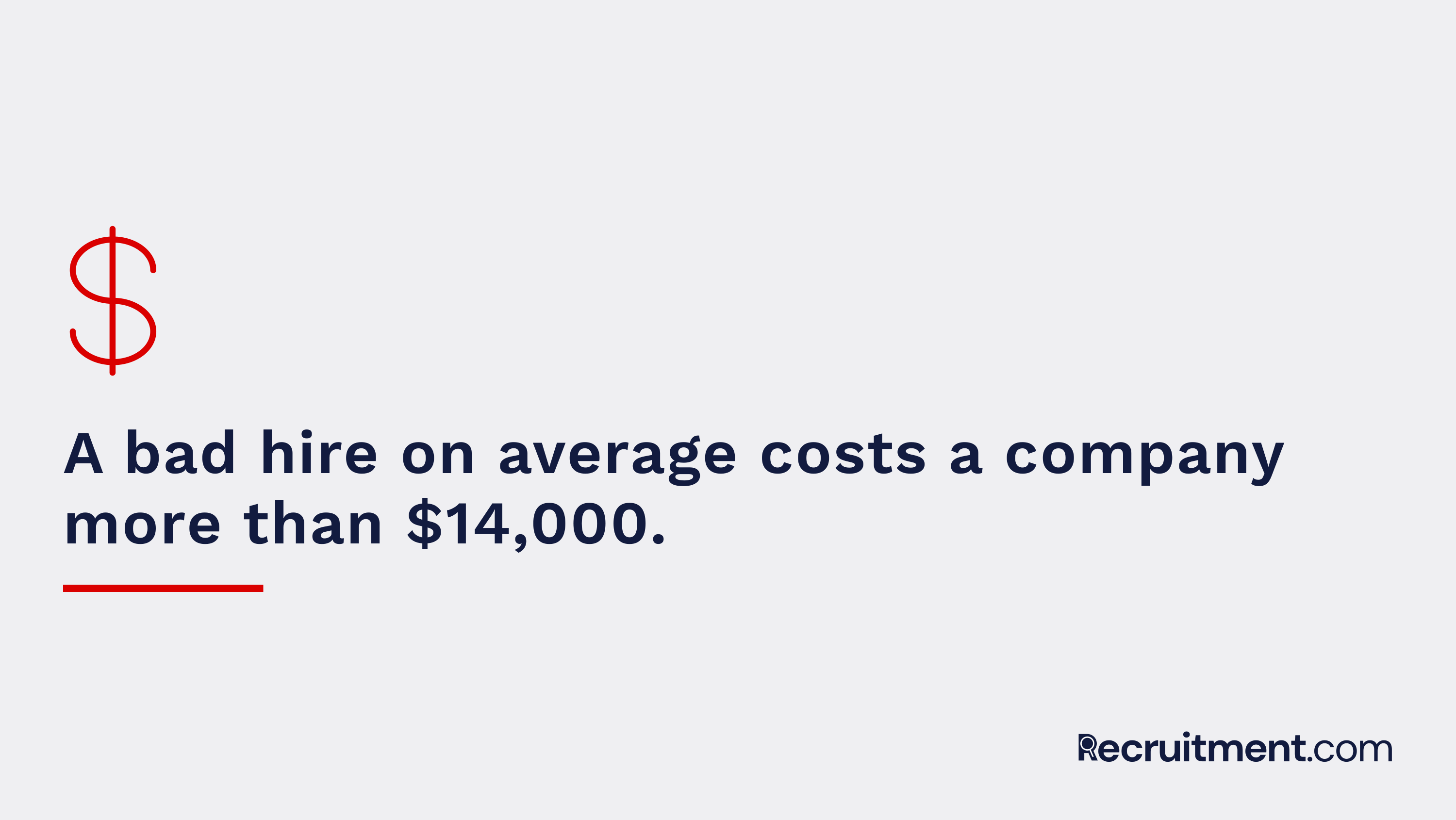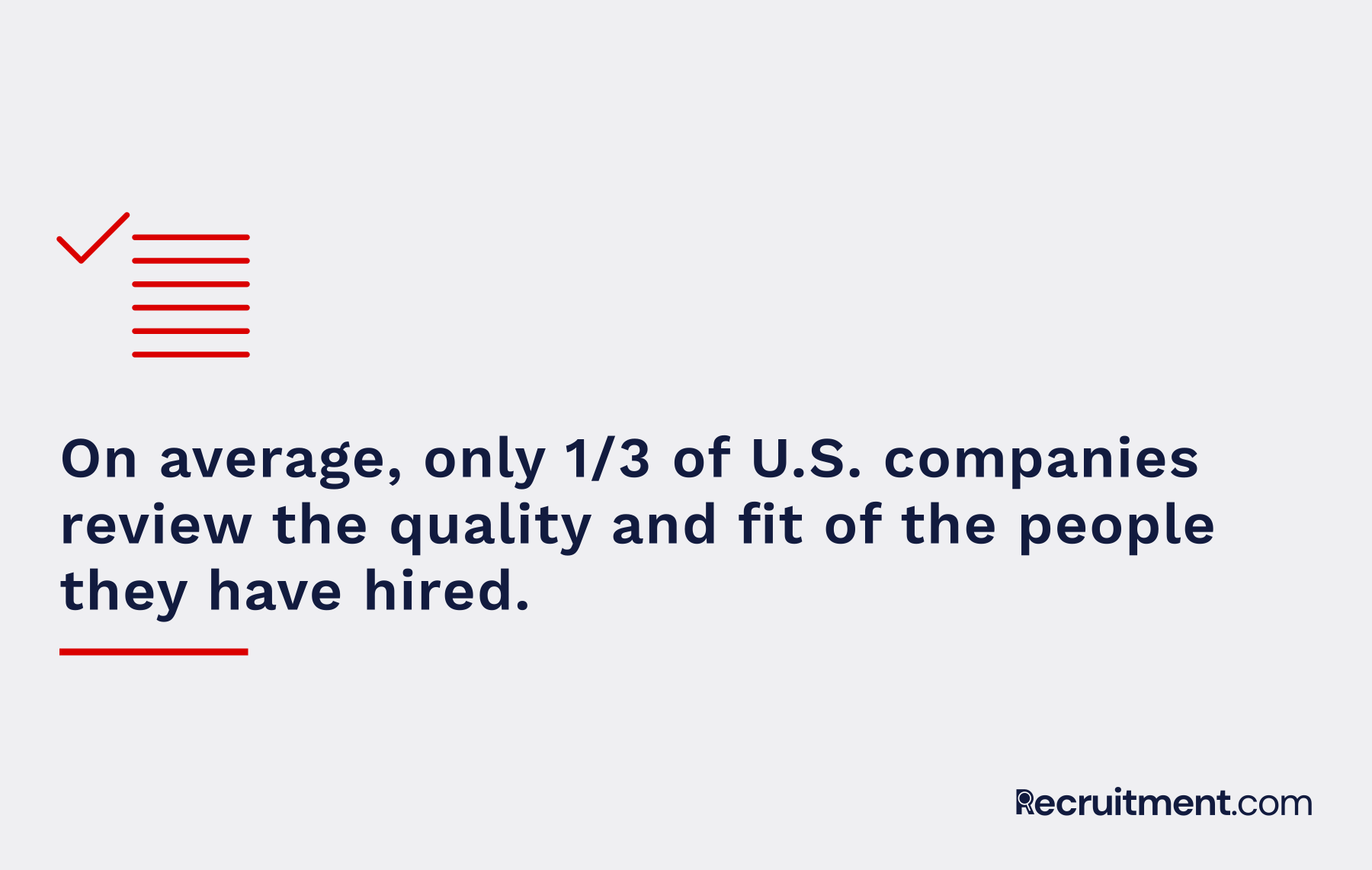The Best Recruitment Process To Make The Right Hire

Josh Spilker is a writer and editor with more than 15 years of experience covering technology, recruiting, and the future of work.
Every company has their own go-to method for recruiting.
You may post a few job ads and call it a day.
Or call your favorite recruiting agency and ask them to do the job for you.
The best companies have a strategy and plan for their workforce to capture new applicants, find word-of-mouth referrals and to reach out to passive talent.
The recruitment process isn’t only the nuts and bolts of job postings and interviews; it’s about how to maximize your strategy and gain a tactical advantage over your competitors.
What Is The Recruitment Process In HR?
The Society for Human Resource Management defines the recruitment process and talent acquisition as “the process of attracting and recruiting the best talent available to ensure your organization has the right people, with the right skills, who are in the right job and are working against the right requirements.”
This process can make or break a company: the types of people you acquire, the skills these employees have and their ability to execute will greatly impact your organization.
A good recruitment process is usually part of a much larger talent acquisition strategy.
What’s the difference between recruiting and talent acquisition?
Recruiting is the act of filling a very specific position, such as calling or emailing specific candidates about a role.
Talent acquisition is a strategic initiative, such as future planning and assessing your future needs, and making the right moves based on your business objectives and growth projections.
What are the stages of the recruitment process?
Generally, the stages are the same for each company even though the tactical and specific steps of the recruitment process may vary. With stages, the objectives are broader and are overarching.
The stages include:
- Workforce planning
- Strategy development
- Sourcing and applicant research
- Screening
- Evaluation and decision
Obviously, the sooner a position is made known in the company, the easier it is to begin the process. In this regard, workforce planning is key, so recruiters understand and can gauge what their workload will look like in the future.

Recruiting and talent acquisition has financial impacts, too. A bad hire on average costs a company more than $14,000, without accounting for the recruiting costs during the process.
If you feel like your company isn’t hiring successfully or your recruitment metrics are falling short, you are not alone.
On average, only one-third of U.S. companies review the quality and fit of the people they have hired. No other department would be satisfied with that type of review and analytics.
Review and refine these steps in the hiring process to make it more successful.
What Are The Steps In The Recruitment Process?
1. Know your needs
Before you fill any job, ask a few questions: Why does this job need to be filled? What are you trying to accomplish? What mindset in a candidate do we value?
You should know what you want out of a position instead of a candidate deciding for you. Flexibility is still a prize to be valued--but parameters will benefit your search and winnow down the number of candidates you consider.
At this step, you want to prioritize the must-have skills versus the optional ones. Decide how what type of experience you are looking for as well.
To help understand the needs, consult with the hiring manager and other members on the team to see what the candidate needs to do in the role and what value-added skills they could give to the role.
2. Create a post about the job
Be descriptive, be specific and create excitement about your employer brand. Highlight the outcomes you want to see from this position and not just the skills needed. This will create more interest for the applicant and attract highly skilled workers who want to make a difference in their next role.
Eliminate any of the obvious fluff in your job description, and any unnecessary tasks for the role that could be picked up. An example of this is listing specific software. Consider how important it is to know that particular program, rather than picking it up on the job. Do they have to know Marketo when previous experience with marketing automation would do?
Do you need experience and strategic thinking with the role, rather than rote experience? Your job description and posting should communicate that fact.
3. Tap into the talent pool
This step is when a recruiter posts the position, receives applications, sources talent or seeks referrals from current employees. Most hires come from applications, but the longest-lasting are referrals or sourced by the company. According to a talent benchmarking report from Lever, it takes more than 100 applicants to make a hire, though that number goes drastically down when you proactively source candidates.
Candidate sourcing. When you source your own candidates, it takes around 40 applicants to make a hire, a 60 percent decrease from an open-ended search. Sourced candidates also onboard faster. The fact is, not all candidates will find your job posting. You also want to capture those passive job seekers. In other words, if you reach out, they will listen.
These days, it means mostly reaching out online but the occasional phone call or conference meetup doesn’t hurt.
Applicants. You never want to fully ignore applicants that arrive from your jobs page or career sites. In fact, this is a huge source for most new employees, especially for SMBs. These are still valuable tools for building your talent pipeline even if you are not actively hiring for positions.
Interested applicants will want to know about your culture and what it’s like to work there. Add photos or social media feeds to showcase what your company is up to.
Referrals. Another passive recruiting tool is employee referrals. This tactic is usually one of the best sources for the highest quality applicants. Candidates from referrals are trusted because current employees know the company and who is likely to be a great culture fit. In fact, employee referrals have a long retention rate when compared to other sources.
4. Manage talent in the recruitment pipeline
In this step, a recruiter will conduct interviews, send follow-ups and check on candidates who have shown interest in a position. This involves assessments, skills tests, culture fits and eventually making an offer. The order of these steps (and the depth of these steps) will depend on each company and their own processes.
Pre-employment testings and assessments. Utilizing a good pre-employment test or assessment before bringing in a candidate for an interview can help solidify your process and knock a few interview questions out of the way. The type of tests and assessments that you use will depend on the job.
A forklift driver will need different skills than a software developer and so you should test for that.
You can use a battery of tests for personality, cognition, aptitude, and specialized skills test to determine the capabilities of the potential employee. Generally, you are looking for knowledge, skills, and abilities to verify the person is a great fit for the job.

Phone interview. This is usually the first in-depth conversation with a candidate to judge the fit and their interest. As a recruiter, you are evaluating the motivations and desire of the candidate in addition to their skills and experience in relation to the role. Candidates who applied are probably more congenial and eager to speak about the position. With a sourced candidate, you may need a different approach. They will probably be more skeptical and ask penetrating questions. Sourced candidates are usually working from a position of strength.
Onsite or video interview. Though there are lots of tips to conducting an on-site interview, it does signal progression and is a key indicator of interest on both sides. The on-site interview involves a larger team: the recruiter, the hiring manager, team members and possibly an executive.
Before the candidate arrives, each person or set of persons conducting interviews should have specific goals in mind: one group should ask about past skills, another about culture and another about the candidate’s own strategic thinking.
See this post for more on best interview questions.
With this in mind, each interviewee should also be asked the same set of questions. This makes for easy comparison across the board. You can evaluate each question along with the assessments to choose a candidate.
5. Monitor the candidate experience
In this step, the recruiter is keeping tabs on the candidate within your company. You may use an applicant tracking system (ATS) or a candidate CRM. Keep track of the candidate’s experience with your company, think about the responses from the managers and take notes on your interviews and interactions. This is a simple one-stop shop to collect all of your impressions, especially if you have several candidates applying for a position.
Also, your company is not the only one making a decision: the applicant is making a decision, too. Candidates could reject your company based on their interview experience and team interactions. Try and get feedback from all candidates on their experience--even if they do not join your team.
Utilizing an applicant tracking system and a candidate CRM helps you know when to follow up in the future. A candidate may say they’re not ready for another few months or to follow up at a different time. A candidate CRM helps you track this, whereas an ATS will involve people who are actively interviewing and pursuing the position.
How To Measure Results in the Recruitment Process
How do you know if a certain marketing channel worked for your job?
One way to figure this is to view the number of applications you received versus the number of interviews you did from that pool. Or the number of candidates who made it to the next stage. Follow these key recruiting metrics to track your success.

Source
Your analytics team will also want to investigate the number of impressions or clicks a specific job posting received and how many qualified candidates came from that. This is your yield ratio.
For example, if you received 200 applications from Indeed.com and 25 of them met your screening criteria, then you would have a 10 percent yield ratio with that channel.
If a source has a high yield ratio, that’s a channel that you will want to invest more time and resources into.
According to a talent benchmarking report from Lever, it takes more than 100 applicants to make a hire, though that number goes drastically down when you proactively source candidates. When you source your own candidates, it takes around 40 applicants to make a hire, a 60 percent decrease from an open-ended search.
Sourced candidates also come onboard faster.
Therefore, investing a high-quality sourcing strategy will help you fill roles faster with fewer candidates to sort through.
Qualified candidates per hire
Usually, this is the number of applicants who make it to the first stage of your recruiting pipeline. It could be they receive a callback or are marked with good potential. This means that the recruiter has viewed the candidate’s experience, resume, cover letter, and any question responses. The recruiter has decided to pass this candidate on to the rest of the team to at least be evaluated.
Qualified candidates per hire helps you see how well your marketing, advertising, and employer brand is with the talent pool you are drawing from.
Time to hire
How long does the recruitment process take?
Recruiting a new candidate takes at least a month, and even longer the larger your company.
The average job interview process is more than 20 days with an average of 4 interviews per position.
According to a study by Lever, marketing and product management roles are the longest, with sales often the fastest.
Conclusion: You Need A Process
The bottom line?
You must have a process for your recruitment. It’s not enough to blindly float between job boards, social media and employee referrals, hoping something sticks. And even if you do make a few great hires that way, can you replicate it again?
Create a recruitment process flowchart or a similar order of operations that your recruiting team follows each and every time. It gives you a starting point to reassess your priorities and strategies each time.
- What steps does your company include in the recruitment process?
- How can you improve your recruitment process?
- Is your recruitment process reproducible?

Josh Spilker is a writer and editor with more than 15 years of experience covering technology, recruiting, and the future of work.






